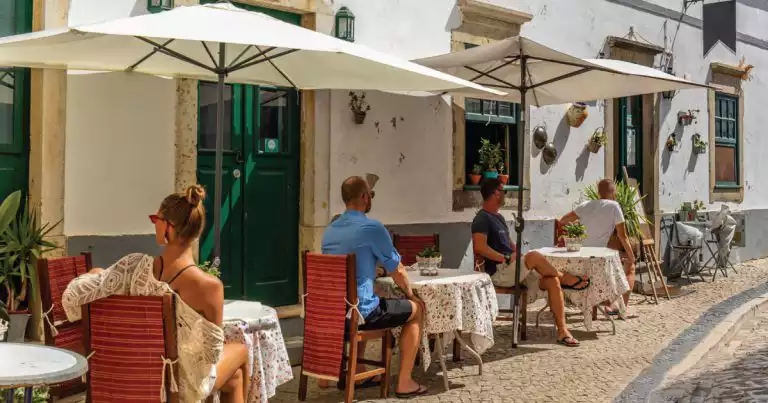Dining Out: Cities Expand Green Space
3 minute read
To help you dine in while also dining out, cities have expanded green space. As cities expand green space, patrons are hoping the temporary initiative stays permanent.
Cities Expand Green Space for Dining Space
Many cities are shutting down streets to increase the green space and expand dining spaces across the country. Restaurants, unfortunately, lend themselves to coronavirus transmission. Dining rooms can be filled to the brim with patrons looking for a relaxing experience. These close quarters is exactly what coronavirus feasts on. Aerosols from sneezing, talking, and coughing can spread beyond the social distancing limits when these aerosols are caught up in the air stream of a restaurant’s air conditioner.
COVID-19 Spread Through Aerosols
This type of situation is exactly what happened in a Wuhan restaurant. One infected diner spread the disease to people at different tables. A University of Oregon study did a 3-D model of this scenario. They then added ventilation to the scenario to show just how different the situation could have been if just a bit of fresh air was added to the equation. The droplets fell to surfaces much quicker and the infected air was diluted, reducing transmission.
Restaurants Use Multiple Methods to Combat COVID-19
The reason so many cities and restaurants are focusing on increasing outdoor dining are that the chance of viral transmission outdoors is more limited. Researchers are still studying COVID-19 so the data is still presenting itself but as the United States pushes through the first wave, researchers are finding evidence that being outdoors is an effective strategy against COVID-19.
Other restaurant owners have turned to more unique options to combat COVID-19. A restaurant owner in the Wisconsin Dells area has turned to technology that uses a combined attack of UV light and anti-microbial spray. Another restaurant owner has turned to shower curtains to help stop the spread. To fully prevent the spread, different sanitation techniques, and a Healthy Air SystemTM – comprised of ventilation, humidity control, and air filtration – present the best options. Currently, though, restaurants and shop owners are eager to get back to business and will happily try different options to make sure customers both feel and are safer.
The new normal of COVID-19 is presenting itself in these restaurants, dining out to dine in looks like it might be enough to squelch the hunger of so many of us who want the taste of a great meal outside of our homes. Or even a respite from the old PB&J routine.
Outdoor Air Quality Increased from Limited Travel
The bigger question though is how long these fixes might last and how many of them become permanent fixtures. The New York Times released an interactive article detailing the reduction in air pollution from people not traveling to work every day. Some companies are choosing to keep their employees at home indefinitely or until a vaccine is released.
These reductions in travel will have an impact on the environment. As some cities close streets for larger outdoor dining spaces, people may eschew driving for public transportation or walking. As cities, businesses, and residents all walk the tight rope of deciding how to safely reopen, there’s no doubt that our climate is reaping benefits. Plenty of videos have circulated online of animals walking down the streets of once-bustling town’s main streets. As climate change becomes an even greater focus, these small changes could result in more permanent fixtures as people adjust to the unusual circumstances presented by a worldwide pandemic.
Cholera Resulted in Expansion of Green Space
This would not be the first time that a pandemic has resulted in more green space in cities worldwide. During the cholera outbreak of the mid -19th century, New York City was a breeding ground for disease.
“Nineteenth-century cities were crowded, filthy places that provided the perfect breeding ground for diseases such as cholera. While garbage, animal manure, and human waste flowed freely into drinking water sources, it was the pungent cocktail of odors they produced that many medical professionals blamed for spreading disease.”
Public health officials concluded that change was needed resulting in wider streets, pigs being expunged to rural areas, and clean water ducted in through pipes and aqueducts. Parks were built for fresh air and clean spaces so residents could relax and perform recreational activities.
Cholera also transformed Paris into a facsimile of beauty. Napoleon III saw the benefit of London’s efforts to clean up their city after their cholera outbreak. He admired the beauty too and ordered Paris to do the same. Many of these plans helped provide a respite from cholera. It also provided a picturesque landscape amidst a sprawling scene of factories and homes.
The New Normal
Everyone is going to have to adjust their normal until an effective vaccine is released. During these warmer months, we will likely enjoy most of our favorite activities in outdoor spaces.
During the fall and winter, customers will have to eat, drink, and shop inside. The health of a businesses’ indoor air is an important step that many companies will eventually have to take. The warmer temperatures do offer us some time until, but healthy indoor air is a year-round solution. Currently, the new normal makes sense, but ventilation is the key to suppressing airborne diseases.
